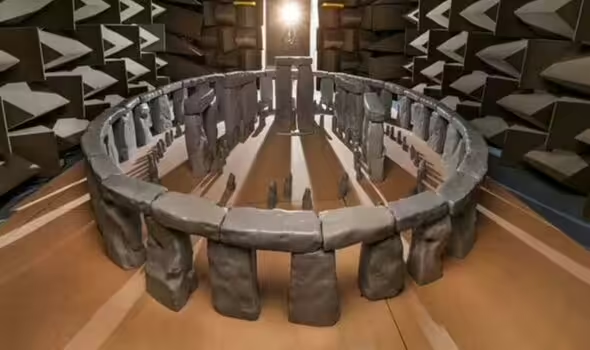Stonehenge – a new study

Stonehenge has more stories and narratives about its purpose than most of us can process, let alone remember. A new finding published in Journal of Archeological Science blew me away. They didn’t focus on the stones’ origins or the religious or political implications, but the acoustics. They built a model and tested sounds.
The abstract:
With social rituals usually involving sound, an archaeological understanding of a site requires the acoustics to be assessed. This paper demonstrates how this can be done with acoustic scale models. Scale modelling is an established method in architectural acoustics, but it has not previously been applied to prehistoric monuments. The Stonehenge model described here allows the acoustics in the Late Neolithic and early Bronze Age to be quantified and the effects on musical sounds and speech to be inferred. It was found that the stone reflections create an average mid-frequency reverberation time of (0.64 ± 0.03) seconds and an amplification of (4.3 ± 0.9) dB for speech. The model has a more accurate representation of the prehistoric geometry, giving a reverberation time that is significantly greater than that measured in the current ruin and a full-size concrete replica at Maryhill, USA. The amplification could have aided speech communication and the reverberation improved musical sounds. How Stonehenge was used is much debated, but these results show that sounds were improved within the circle compared to outside. Stonehenge had different configurations, especially in terms of the positions of the bluestones. However, this made inaudible changes to the acoustics, suggesting sound is unlikely to be the underlying motivation for the various arrangements.
https://www.sciencedirect.com/
If the abstract is insufficient, here are my key findings.
First, the henge enhanced sounds within it, “which provided useful amplification of the voice and enhanced musical sounds for those standing within the stone circle”. Second, sounds made within the henge most likely did not carry outside the stones. The authors, however, caution that acoustics were the primary motivation behind the construction, “Overall, it seems improbable that sound was a primary driver in the design and arrangement of the stones at Stonehenge. Other considerations were more likely to be important, including the astronomical alignments, the incorporation of two different groups of stones, the replication of similar timber monuments and the creation of an impressive and awe-inspiring architectural structure.”